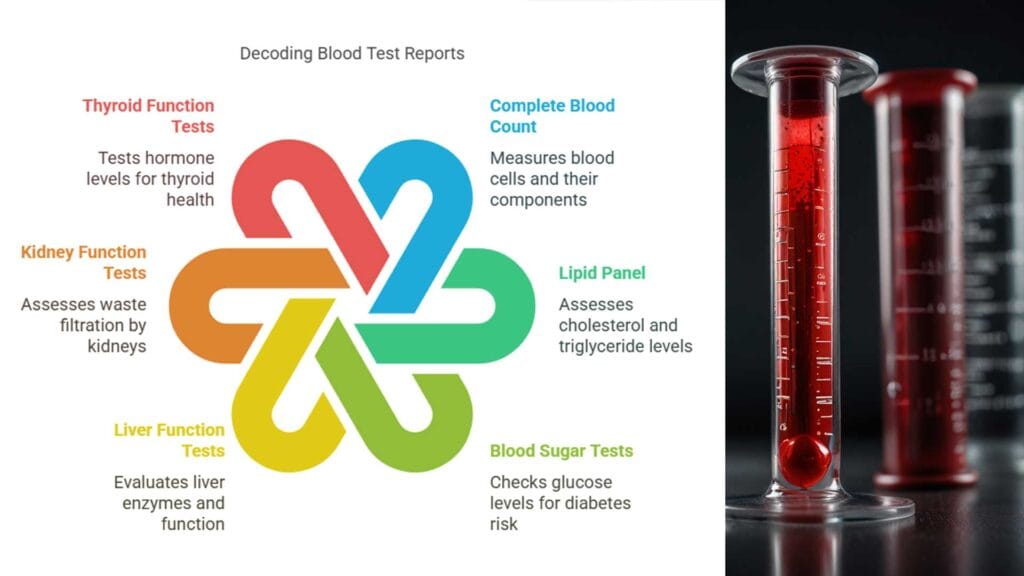We all know the importance of regular health checkups. It’s like taking your car in for servicing – a way to catch potential problems early and keep everything running smoothly. A crucial part of that checkup is the blood work. Those vials of blood they take hold a wealth of information about your overall health.
- Why Are Blood Tests So Important in a Physical Exam?
- The Comprehensive List of Blood Tests in a Routine Physical Exam
- 1. Complete Blood Count (CBC) – The Foundation of Blood Work
- 2. Lipid Panel (Lipid Profile) – Assessing Heart Health Risk
- 3. Blood Sugar (Glucose) Tests – Checking for Diabetes
- 4. Liver Function Tests (LFTs) – Evaluating Liver Health
- 5. Kidney Function Tests (KFTs) – Assessing Kidney Health
- 6. Thyroid Function Tests (TFTs) – Evaluating Thyroid Function
- 7. Electrolyte Panel
- 8. Other Blood Tests
- Understanding Your Results: A Collaborative Effort
- Taking Charge of Your Health
But often, we get our reports back, filled with medical jargon and numbers, and we’re left feeling confused. What do all these tests actually mean? This article is your friendly guide to understanding the blood tests commonly ordered during a physical exam. We’ll break down the complex terms, explain what each test measures, and why it’s important for assessing your health. Think of this as your cheat sheet to decoding your blood work!
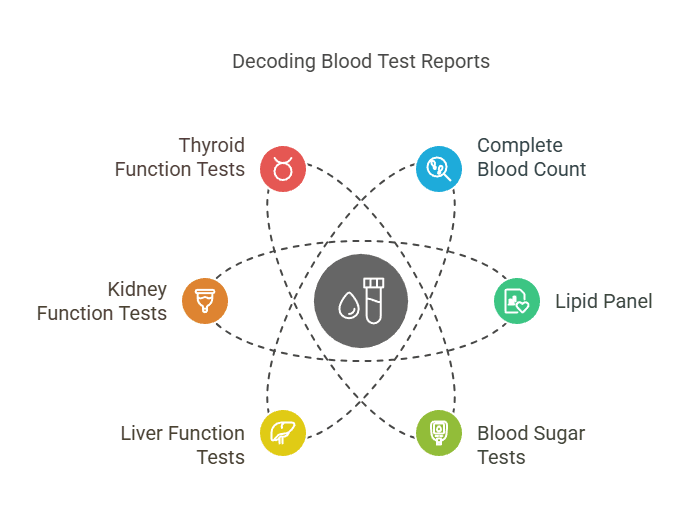
Why Are Blood Tests So Important in a Physical Exam?
Before we dive into the specific tests, let’s understand why blood tests are such a vital part of preventative healthcare. Your blood is like a highway system, carrying vital substances throughout your body. By analyzing the components of your blood, doctors can get a comprehensive snapshot of your:
- Organ Function: Tests can assess how well your liver, kidneys, thyroid, and other organs are functioning.
- Risk Factors for Disease: Blood tests can identify risk factors for conditions like heart disease, diabetes, and anemia.
- Overall Health Status: They provide a baseline measurement of your health, allowing doctors to track changes over time.
- Presence of Infections or Inflammation: Certain blood tests can indicate if you have an underlying infection or inflammation.
- Electrolite and mineral balence The levels of various electrolytes (like sodium, potassium, and chloride) and minerals (like calcium and phosphorus) are also mesured.
Blood tests are powerful tools for:
- Early Detection: Catching potential problems before they cause symptoms.
- Diagnosis: Helping to diagnose existing health conditions.
- Monitoring: Tracking the effectiveness of treatments and lifestyle changes.
- Prevention: Identifying risk factors and guiding preventative measures.
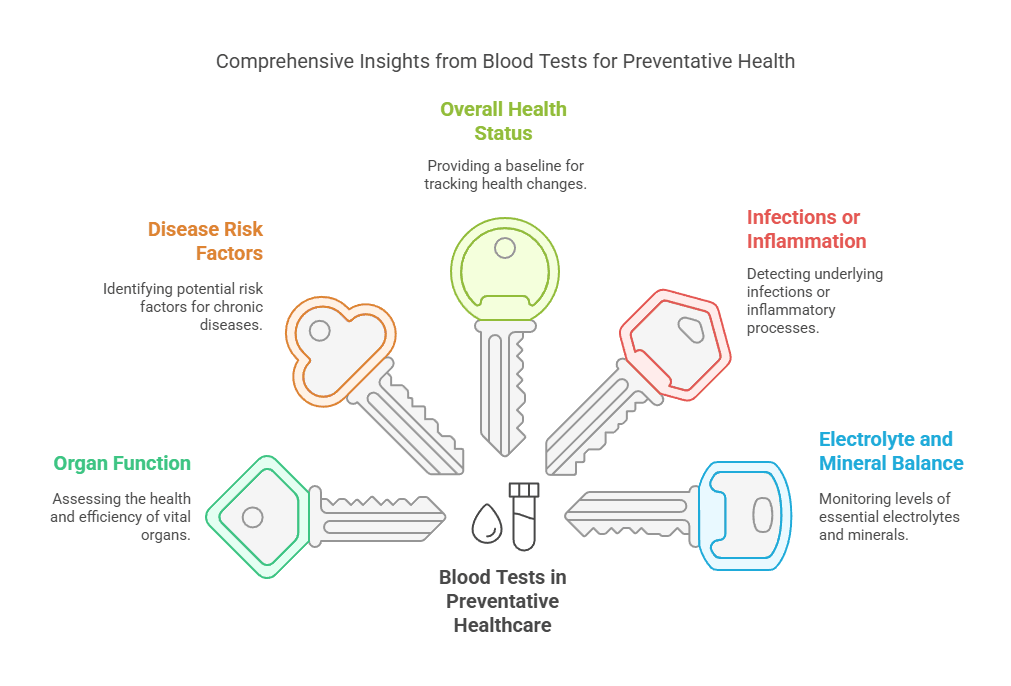
The Comprehensive List of Blood Tests in a Routine Physical Exam
Now, let’s get to the heart of the matter. Here’s a detailed breakdown of the blood tests commonly included in a physical exam, explained in plain language:
1. Complete Blood Count (CBC) – The Foundation of Blood Work
The CBC is almost always included in a routine physical. It’s a broad screening test that provides a wealth of information about your blood cells. It includes:
White Blood Cell (WBC) Count:
- Total WBC Count: Measures the total number of white blood cells, which are your body’s defense against infection. A high count (leukocytosis) can indicate infection, inflammation, or other conditions. A low count (leukopenia) can increase your risk of infection.
- Differential WBC Count: Breaks down the total WBC count into different types of white blood cells (neutrophils, lymphocytes, monocytes, eosinophils, basophils). Each type plays a different role in fighting infection and inflammation. Changes in the proportions of these cells can provide clues about the type of problem.
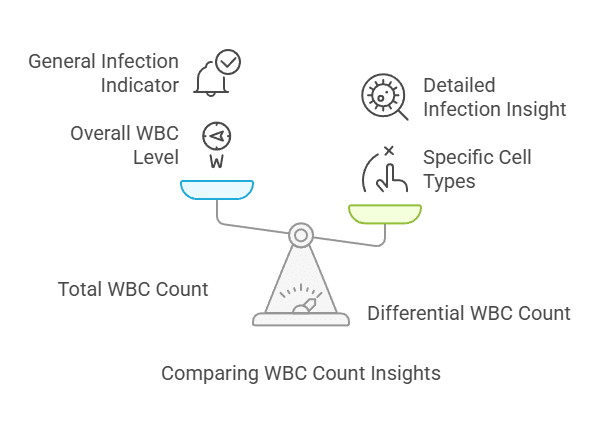
Red Blood Cell (RBC) Count:
Measures the number of red blood cells, which carry oxygen throughout your body. A low count (anemia) can cause fatigue and weakness. A high count (polycythemia) can be caused by various conditions.
Hemoglobin (Hb):
Measures the amount of hemoglobin, the protein in red blood cells that carries oxygen. Low hemoglobin levels indicate anemia.
Hematocrit (Hct):
Measures the percentage of your blood that is made up of red blood cells. It’s another indicator of anemia.
Platelet Count:
Measures the number of platelets, which are cells that help your blood clot. A low count (thrombocytopenia) can increase your risk of bleeding. A high count (thrombocytosis) can be caused by various conditions.
Red Blood Cell Indices:
- Mean Corpuscular Volume (MCV): Measures the average size of your red blood cells.
- Mean Corpuscular Hemoglobin (MCH): Measures the average amount of hemoglobin in each red blood cell.
- Mean Corpuscular Hemoglobin Concentration (MCHC): Measures the average concentration of hemoglobin in your red blood cells.
- Red Cell Distribution Width (RDW): Measures the variation in the size of your red blood cells.
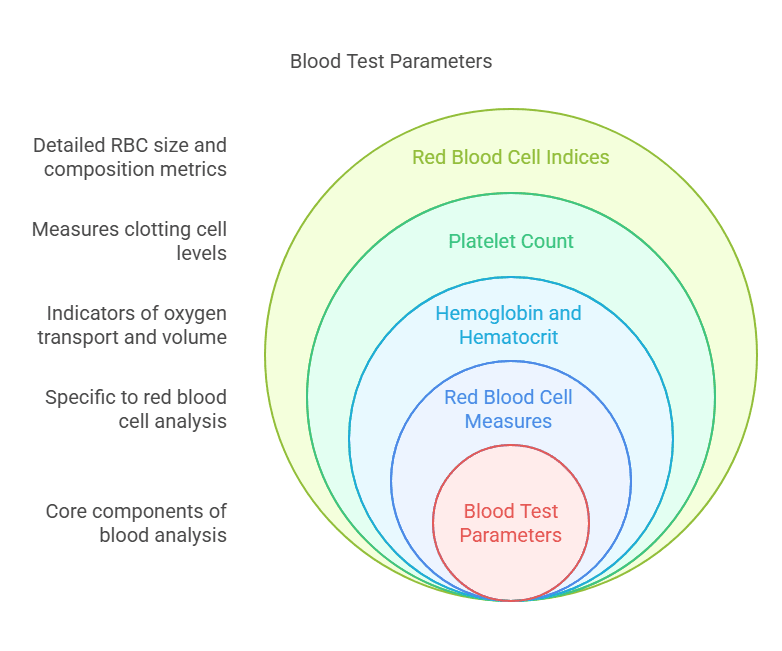
2. Lipid Panel (Lipid Profile) – Assessing Heart Health Risk
A lipid panel measures the levels of different types of fats (lipids) in your blood. It’s a crucial test for assessing your risk of heart disease. It typically includes:
- Total Cholesterol: Measures the total amount of cholesterol in your blood.
- Low-Density Lipoprotein (LDL) Cholesterol: Often called “bad” cholesterol, high levels of LDL increase your risk of heart disease.
- High-Density Lipoprotein (HDL) Cholesterol: Often called “good” cholesterol, high levels of HDL protect against heart disease.
- Triglycerides: Another type of fat in your blood. High levels increase your risk of heart disease.
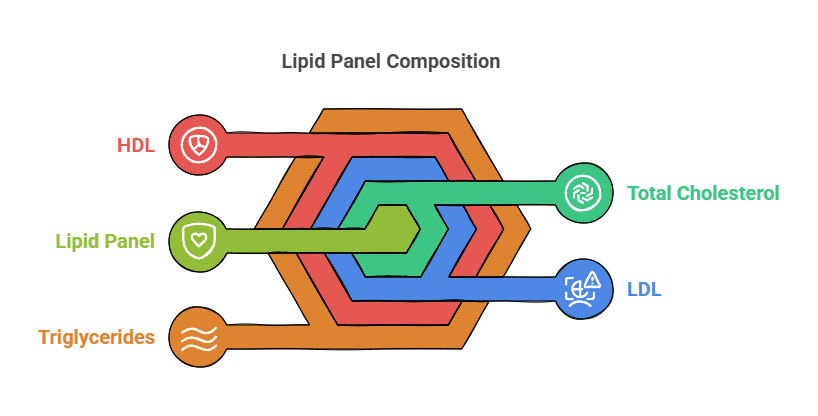
3. Blood Sugar (Glucose) Tests – Checking for Diabetes
These tests measure the level of glucose (sugar) in your blood. They are essential for screening for and managing diabetes. Several different tests may be used:
- Fasting Blood Sugar (FBS): Measures your blood sugar after you’ve fasted (not eaten or drunk anything except water) for at least 8 hours.
- Postprandial Blood Sugar (PPBS): Measures your blood sugar 2 hours after you’ve eaten a meal.
- HbA1c (Glycated Hemoglobin): Measures your average blood sugar level over the past 2-3 months. It provides a longer-term picture of your blood sugar control.
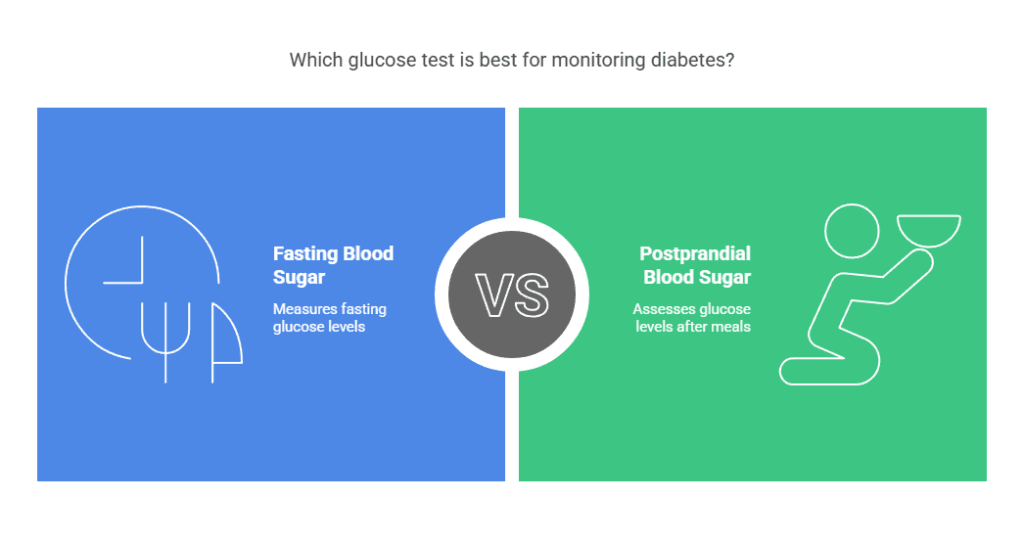
4. Liver Function Tests (LFTs) – Evaluating Liver Health
LFTs are a group of blood tests that measure the levels of various enzymes and proteins produced by the liver. They help assess liver function and detect liver damage or disease. Common LFTs include:
- Alanine Aminotransferase (ALT): An enzyme primarily found in the liver. Elevated levels indicate liver damage.
- Aspartate Aminotransferase (AST): Another enzyme found in the liver and other tissues. Elevated levels can indicate liver damage, but also muscle damage or other conditions.
- Alkaline Phosphatase (ALP): An enzyme found in the liver, bones, and other tissues. Elevated levels can indicate liver disease, bone disorders, or other conditions.
- Bilirubin: A pigment produced when red blood cells break down. Elevated levels can indicate liver disease or problems with the bile ducts.
- Albumin: A protein produced by the liver. Low levels can indicate liver disease, kidney disease, or malnutrition.
- Total protien: mesuring total amount of protien present in blood, help to find out liver and kidney diseases.
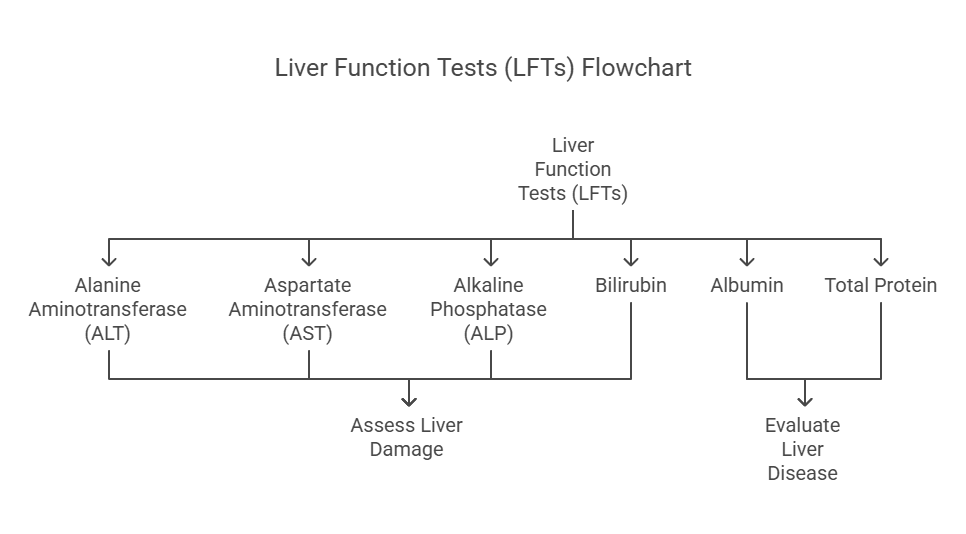
5. Kidney Function Tests (KFTs) – Assessing Kidney Health
KFTs measure the levels of various substances in your blood that are filtered by the kidneys. They help assess kidney function and detect kidney disease. Common KFTs include:
- Blood Urea Nitrogen (BUN): Measures the amount of urea nitrogen, a waste product, in your blood. Elevated levels can indicate kidney problems.
- Creatinine: Another waste product produced by your muscles. Elevated levels can indicate kidney problems.
- Estimated Glomerular Filtration Rate (eGFR): A calculated value that estimates how well your kidneys are filtering waste products from your blood. It’s a more accurate measure of kidney function than BUN or creatinine alone.
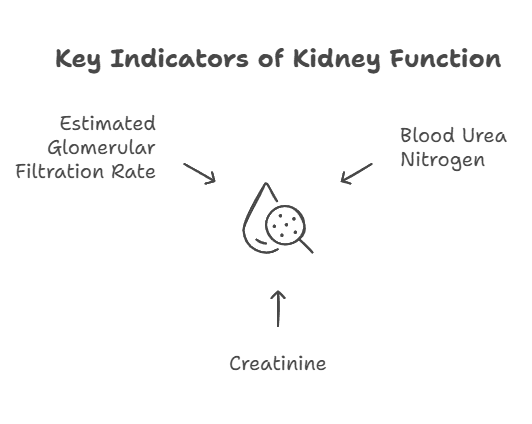
6. Thyroid Function Tests (TFTs) – Evaluating Thyroid Function
TFTs measure the levels of thyroid hormones in your blood. They help assess thyroid function and detect thyroid disorders, such as hypothyroidism (underactive thyroid) or hyperthyroidism (overactive thyroid). Common TFTs include:
- Thyroid-Stimulating Hormone (TSH): A hormone produced by the pituitary gland that stimulates the thyroid gland to produce thyroid hormones. TSH is the most commonly used test to screen for thyroid problems.
- Thyroxine (T4): The main hormone produced by the thyroid gland.
- Triiodothyronine (T3): Another thyroid hormone.
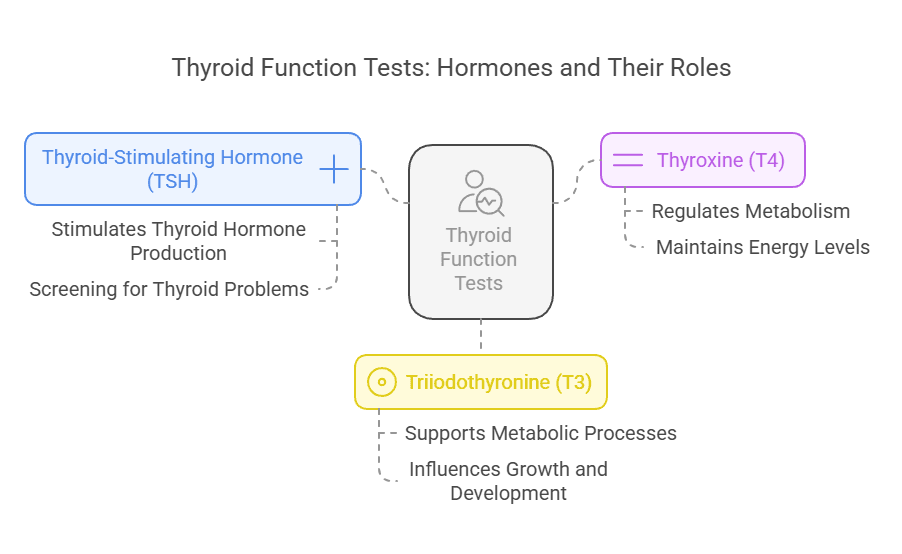
7. Electrolyte Panel
Electrolyte Panel, measure the electrolites levels, which includes:
- Sodium (Na+): Helps regulate fluid balance and nerve function.
- Potassium (K+): Important for muscle and nerve function, including heart rhythm.
- Chloride (Cl-): Helps maintain fluid balance and acid-base balance.
- Bicarbonate (HCO3-): Helps maintain acid-base balance in the blood.
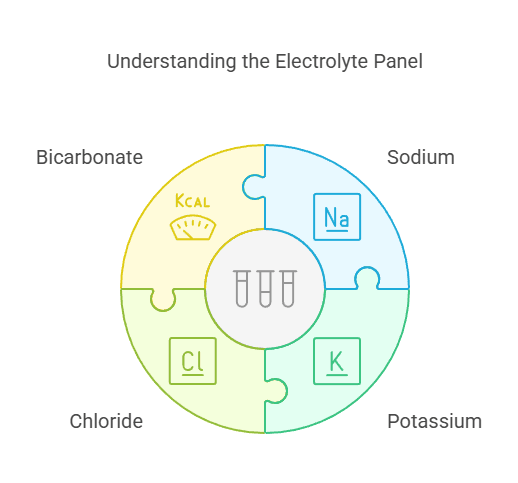
8. Other Blood Tests
Depending on your individual risk factors, medical history, and symptoms, your doctor may order additional blood tests, such as:
- Vitamin D Test: To check for vitamin D deficiency, which is common.
- Iron Studies (Serum Iron, Ferritin, TIBC): To assess iron levels and diagnose iron deficiency anemia.
- Vitamin B12 Test: To check for vitamin B12 deficiency.
- C-reactive protien (CRP) To check inflammation.
- Uric Acid: To check risk of Gout.
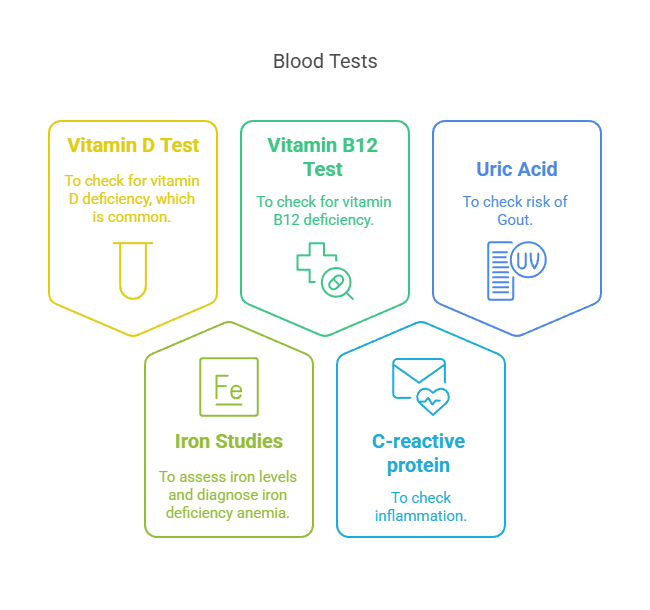
Understanding Your Results: A Collaborative Effort
It’s crucial to remember that blood test results should always be interpreted by a qualified healthcare professional. A single abnormal result doesn’t necessarily mean you have a serious medical condition. Your doctor will consider your:
- Overall Health: Your general health status and any symptoms you may be experiencing.
- Medical History: Your past medical conditions and family history.
- Lifestyle Factors: Your diet, exercise habits, and other lifestyle factors.
- Other Test Results: The results of other tests, such as a physical exam and imaging studies.
- Normal Ranges: Laboratory reports will provide “normal” or “reference” ranges for each test. These ranges can vary slightly between different laboratories.
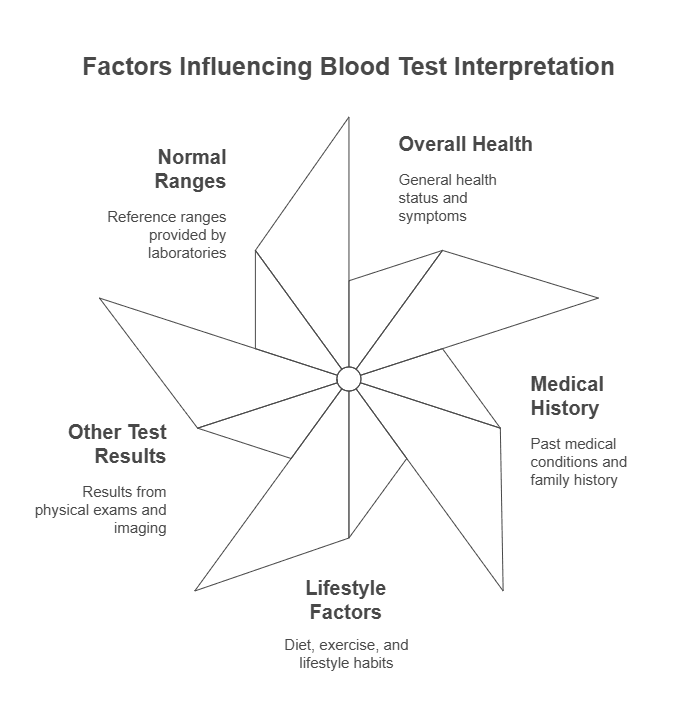
Your doctor will explain your results in detail and answer any questions you may have. They may recommend lifestyle changes, further testing, or treatment, depending on the findings.
Frequently Asked Questions (FAQs)
Taking Charge of Your Health
Regular physical exams, including blood tests, are a vital part of preventative healthcare. By understanding the common blood tests and what they measure, you can be a more informed and empowered participant in your own health journey. Remember to discuss your results with your doctor and work together to create a personalized plan for maintaining your health and well-being.

